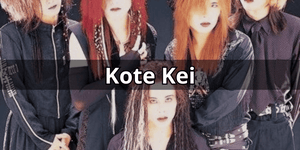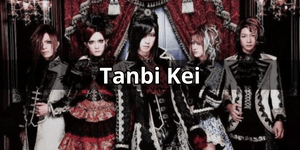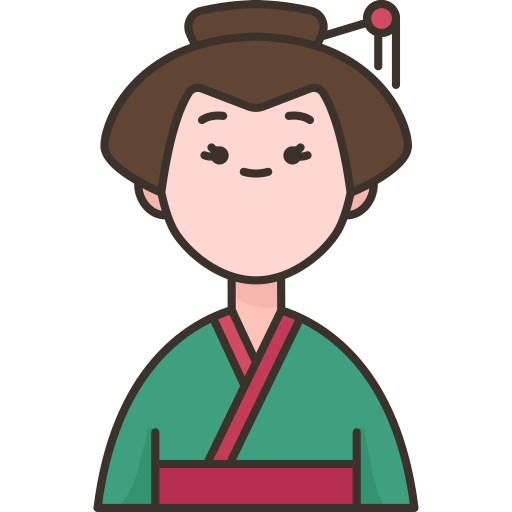Exploring the Unique World of Angura Kei Fashion
Angura Kei fashion, a remarkable style with deep roots in Japan's vibrant culture, is a fascinating blend of traditional and contemporary aesthetics. Emerging as more than just a fashion statement, Angura Kei is a creative expression deeply intertwined with the country's rich history and the evolving landscape of Japanese street fashion. This style, characterized by its bold and unconventional designs, reflects a unique fusion of the past and present, resonating with those who seek to stand out in the diverse world of fashion.
Tracing its origins back to the bustling streets of Japan, Angura Kei has become a significant part of the broader spectrum of Japanese street fashion. Its inception is closely linked to the nation's artistic and theatrical scenes, drawing inspiration from various cultural and historical elements. As a distinctive style, Angura Kei stands out for its ability to harmonize traditional Japanese motifs with modern, edgy twists, making it a symbol of Japan's dynamic and ever-evolving fashion landscape.
The Rich Tapestry of Angura Kei's Origins

Angura Kei fashion has its roots deeply embedded in the vibrant and rebellious underground theatre scene of Japan, known as "Angura," a term that translates to "underground" in Japanese. This movement, born in the tumultuous era of the 1960s and 1970s, was a melting pot of artistic rebellion and cultural exploration, reflecting the societal shifts and youthful energy of the time. The Angura theatre, with its avant-garde performances and unconventional narratives, became a breeding ground for a new, bold fashion style that challenged traditional norms and embraced a more expressive form of self-identity.
As Angura Kei evolved, it absorbed the essence of this theatrical movement, translating dramatic elements from the stage to the streets. This era was characterized by a spirit of experimentation and a desire to push boundaries, both in art and in fashion. The Angura theatre's influence on this fashion style is evident in its dramatic flair, eclectic mix of elements, and the bold statement it makes. Angura Kei, thus, stands as a tribute to a significant chapter in Japan's cultural history, embodying the spirit of an era that dared to redefine creativity and self-expression.
Unveiling the Distinctive Elements of Angura Kei Style

The Angukei Kei fashion is not just about clothing; it's a comprehensive aesthetic that includes an array of distinctive features. These elements collectively define the essence of Angura Kei, creating a look that's both deeply rooted in tradition and boldly contemporary.
- Traditional Japanese Clothing Elements: Angura Kei often incorporates traditional Japanese garments like kimonos, hakamas, and yukatas. These items are reimagined through unconventional layering or paired with modern pieces to create a fusion look that respects heritage while pushing fashion boundaries.
- Gothic Influences: The dark, mysterious allure of gothic fashion is a significant aspect of Angura Kei. Elements like black lace, Victorian-era corsets, and dark, dramatic makeup contribute to the style's enigmatic charm.
- Punk Styles: Echoing the rebellious spirit of punk culture, Angura Kei includes ripped fabrics, leather jackets, metal studs, and chains. This edgy aspect adds a raw, unapologetic energy to the ensemble.
- Unique Makeup and Hair Styling: Makeup and hair are integral to Angura Kei, often featuring bold, theatrical makeup and unconventional hairstyles. This can range from dramatic eye makeup and vivid lip colors to artistically styled hair, sometimes incorporating vibrant dyes.
Angura Kei Relationship with Art and Music
Angura Kei's relationship with the arts, particularly music, is not just a connection but a profound symbiosis. This fashion style resonates deeply with the rhythms and ethos of underground music, drawing inspiration from the raw, emotive energy of these artistic expressions. Fans of Angura Kei and Visual Kei often find a parallel between their sartorial choices and their musical tastes, gravitating towards genres that defy mainstream norms. This shared affinity for the unconventional is what binds the Angura Kei community, creating a collective identity that transcends mere fashion.
Furthermore, the theatrical aspects of Angura Kei align closely with performance art, particularly underground theatre. The dramatic flair and storytelling elements inherent in this style mirror the immersive experience of avant-garde theatre. Adherents of Angura Kei often embrace this theatricality, using their attire as a canvas to convey narratives and emotions, much like actors on a stage. This artistic connection underscores the depth of Angura Kei – it's not just about dressing up, but about embodying a lifestyle that celebrates art in its most eclectic forms.
Conclusion
Angura Kei fashion, deeply rooted in Japan's underground theatre, is a captivating fusion of traditional Japanese attire and contemporary, edgy elements. This style, born from the rebellious 1960s and 1970s, symbolizes a daring departure from the norm, blending dramatic theatrical influences with punk and gothic undertones. It's more than mere clothing; it's a lifestyle choice that resonates with the spirit of avant-garde art and underground music. Embracing bold makeup, unconventional hairstyles, and eclectic clothing, Angura Kei stands as a vibrant testament to Japan's dynamic fashion scene and its unyielding passion for artistic expression and cultural evolution.











